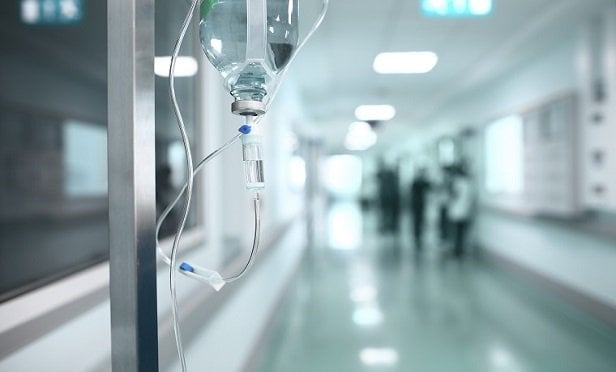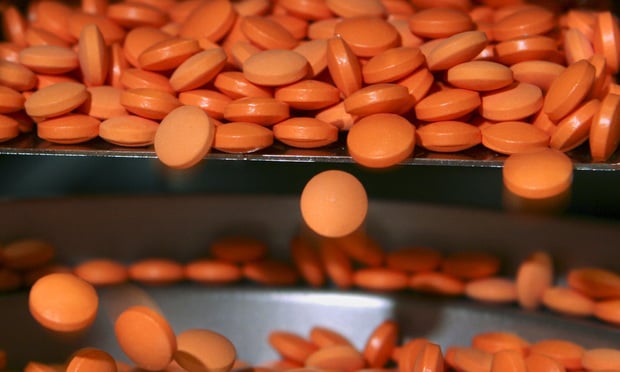 An 80 percent infection rate could result in $654 billion in costs to pay for 10.7 million intensive care admissions, 249.9 million hospital bed days and the need for 6.5 million ventilators.
An 80 percent infection rate could result in $654 billion in costs to pay for 10.7 million intensive care admissions, 249.9 million hospital bed days and the need for 6.5 million ventilators.
A new study in Health Affairs Journal offers some perspective of just how extensive and costly the COVID-19 strain on the United States' public health system already is, and how it may be exponentially more if social distancing and other containment measures are cast aside too soon.
Even more eye-popping are the figures that could result if the "herd immunity" theory advocated in some quarters–which involves simply letting large numbers of people get sick sick in the hope that the population will develop immunity in response–were to gain widespread acceptance.
Related: What health care costs will look like post-COVID-19
"Any discussion regarding the cost or burden of social distancing should include the costs on the other side of the equation such as health care costs, which are the costs that such approaches are potentially reducing," the authors write.
Starting with an average baseline cost of $3,045 for a single, symptomatic COVID-19 infection in direct medical costs incurred only during the infection, the study projects that, if 20% of the population gets infected, the cost would come to $163.4 billion.
The estimate includes the cost of hospitalizing 11.2 million patients for a total of 62.3 million days in hospital beds, and the use of 1.6 million ventilators.
Meanwhile, a 50% attack rate would result in an estimated $408.8 billion in direct medical costs, with a median price of $536.7 billion including post-discharge costs.
But if the number of infections is allowed to balloon to 80 percent of the population, the study projects a cost of $654 billion to pay for 10.7 million intensive care admissions, 249.9 million hospital bed days and the need for 6.5 million ventilators.
Those are just the direct medical costs, the authors noted, and don't include impacts on productivity caused by employee absenteeism or the increase in medical costs related to other health conditions that may be worsened as a result of the virus.
"Moreover, our analysis did not include indirect medical costs or effects such as reductions in elective procedures decreasing revenue, or potential costs from worse disease outcomes due to increases due to postponement of preventive care and diagnosis," the others write.
Using complex computer models based on the age and health of various groups, researchers relied on data from the current break and models of prior pandemics including the 2009 H1N1 pandemic, 2015-2016 Zika outbreak and the Ebola outbreak in Africa.
Basing each case's analysis on the reported age distribution of COVID-19 cases, each infected person "travels through a probability tree of different possible sequential clinical outcomes." For instance, a person may be asymptomatic throughout the infection, or display symptoms and progress through a range of treatments from a telephone consult with a doctor and treatment with over-the-counter medications all the way to admission to a hospital and development of sepsis or respiratory problems requiring a ventilator.
"If hospitalized, this patient has a probability of dying, and if surviving, he/she could require additional care after hospital discharge," the study said. "For each of the aforementioned steps and possible outcomes, the person accrues different associated costs."
There has been commentary comparing the COVID-19 virus to influenza and similar disease, but the study indicates that such comparisons are misplaced. "The direct medical costs are higher than other common infectious diseases because COVID-19 infection can have a higher probability of hospitalization and mortality compared to seasonal influenza and other pathogens.
"While the COVID-19-specific probabilities are based on emerging data, our results were robust to varying the probability of ICU admission and death," the study authors continued. "Additionally, a potential lingering medical cost after the acute infection has run its course is the cost of caring for those who have survived major complications such as [acute respiratory distress syndrome] and sepsis."
The study cautioned that measures to keep the infection rate as low as possible are by far the least costly approach, noting "the significant difference in medical costs by attack rate show the value of any strategies that can keep the attack rate as low as possible and, conversely, the potential cost of any 'herd immunity' strategies that allow people to get infected."
Read more:
© Touchpoint Markets, All Rights Reserved. Request academic re-use from www.copyright.com. All other uses, submit a request to [email protected]. For more inforrmation visit Asset & Logo Licensing.







